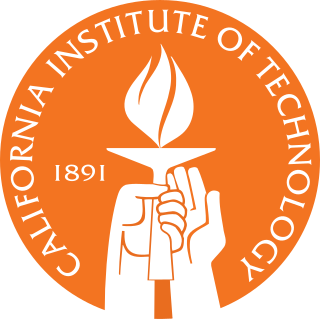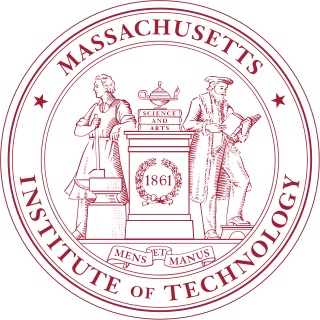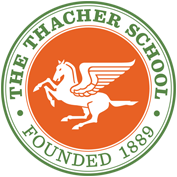
The California Institute of Technology (branded as Caltech) is a private research university in Pasadena, California. The university is responsible for many modern scientific advancements and is among a small group of institutes of technology in the United States which are strongly devoted to the instruction of pure and applied sciences. Due to its history of technological innovation, Caltech has been considered to be one of the world's most prestigious universities.

Jet Propulsion Laboratory (JPL) is a federally funded research and development center in Pasadena, California, United States. Founded in 1936 by Caltech researchers, the laboratory is now owned and sponsored by the National Aeronautics and Space Administration (NASA) and administered and managed by the California Institute of Technology.

The Massachusetts Institute of Technology (MIT) is a private land-grant research university in Cambridge, Massachusetts. Established in 1861, MIT has played a significant role in the development of many areas of modern technology and science.

The École polytechnique fédérale de Lausanne is a public research university in Lausanne, Switzerland. Established in 1969, EPFL has placed itself as a public research university specializing in engineering and natural sciences.
George Ogden Abell was an American educator. Teaching at UCLA, priorly he worked as a research astronomer, administrator, as a popularizer of science and of education, and as a skeptic. He earned his B.S. in 1951, his M.S. in 1952 and his Ph.D. in 1957, all from the California Institute of Technology. He was a Ph.D. student under Donald Osterbrock. His astronomical career began as a tour guide at the Griffith Observatory in Los Angeles. Abell made great contributions to astronomical knowledge which resulted from his work during and after the National Geographic Society - Palomar Observatory Sky Survey, especially concerning clusters of galaxies and planetary nebulae. A galaxy, an asteroid, a periodic comet, and an observatory are all named in his honor. His teaching career extended beyond the campus of UCLA to the high school student oriented Summer Science Program, and educational television. He not only taught about science but also about what is not science. He was an originating member of the Committee on Scientific Investigation of Claims of the Paranormal now known as the Committee for Skeptical Inquiry.

The International Space University (ISU) is dedicated to the discovery, research, and development of outer space and its applications for peaceful purposes, through international and multidisciplinary education and research programs. ISU was founded in 1987 and is registered in France and in the US as a non profit organisation. The university offers a one or two-year Master in Space Studies (MSS) in Strasbourg and shorter professional development programs across the world. The latter include an itinerant nine-week Space Studies Program (SSP), a five-week Southern Hemisphere SSP in partnership with the University of South Australia, a 6-week Commercial Space graduate certificate in partnership with the Florida Institute of Technology, and one-week Executive Space Courses in Australia, Europe and the USA.

The Research Science Institute (RSI) is an international summer research program for high school students. RSI is sponsored by the Center for Excellence in Education (CEE) and hosted by the Massachusetts Institute of Technology (MIT) in Cambridge, Massachusetts. RSI brings together the top STEM talent from around the world for the opportunity to conduct original scientific research, cost-free, for six weeks during the summer before their final year of high school.

The Thacher School is a private co-educational boarding school on 427 acres in Ojai, California. Founded in 1889 as a boys' school, it is now the oldest co-educational boarding school in California. Girls were first admitted in 1977, with the first co-ed graduating class being the class of 1978. Unique to Thacher are its Horse and Outdoors Programs. Its founder, Sherman Day Thacher, believed in the power of the outdoors to help shape students: “Come West, breathe deep, let these hills be your teachers.”

Carolyn C. Porco is an American planetary scientist who explores the outer Solar System, beginning with her imaging work on the Voyager missions to Jupiter, Saturn, Uranus and Neptune in the 1980s. She led the imaging science team on the Cassini mission in orbit around Saturn. She is an expert on planetary rings and the Saturnian moon, Enceladus.

Hacks at the Massachusetts Institute of Technology are practical jokes and pranks meant to prominently demonstrate technical aptitude and cleverness, and/or to commemorate popular culture and historical topics. The pranks are anonymously installed at night by hackers, usually, but not exclusively, undergraduate students. The hackers' actions are governed by an informal yet extensive body of precedent, tradition and ethics. Hacks can occur anywhere across campus, and occasionally off campus; many make use of the iconic Great Dome, Little Dome, Green Building tower, or other prominent architectural features of the MIT campus. Well-known hacker alumni include Nobel Laureates Richard P. Feynman and George F. Smoot. In October 2009, US President Barack Obama made a reference to the MIT hacking tradition during an on-campus speech about clean energy.

The South Carolina Governor's School for Science and Mathematics (GSSM) is a public, boarding high school for students in grades 11 and 12, located in Hartsville, South Carolina. The school concentrates on science and mathematics, but offers the full spectrum of the humanities as well.

The traditions and student activities at the Massachusetts Institute of Technology encompass hundreds of student activities, organizations, and athletics that contribute to MIT's distinct culture.
Sherman Day Thacher,, was the founder and headmaster of The Thacher School at Ojai, California.

Indian Institute of Space Science and Technology (IIST) is a government-aided institute and deemed university for the study and research of space science, located in Thiruvananthapuram,India. IIST was set up in 2007 by the Indian Space Research Organisation (ISRO) under the Department of Space, Government of India.
23131 Debenedictis, provisional designation 2000 AS128, is a bright background asteroid from the inner region of the asteroid belt, approximately 4 kilometers in diameter. It was discovered on 5 January 2000, by astronomers of the LINEAR program at the Lincoln Laboratory's Experimental Test Site near Socorro, New Mexico, United States. The asteroid was named for 2007-ISEF awardee Erika Alden DeBenedictis.

The Virginia Tech College of Engineering is the academic unit that manages engineering research and education at Virginia Tech. The College can trace its origins to 1872, and was formally established in 1903. Today, The College of Engineering is the largest academic unit of Virginia Tech and has 14 departments of study. Its undergraduate program was ranked 4th and its graduate program was ranked 30th among doctoral-granting universities by U.S. News & World Report in 2018. In 2014–15, the College of Engineering consisted of 10,059 students. The current dean is Dr. Julia Ross.
The college rivalry between the California Institute of Technology (Caltech) and the Massachusetts Institute of Technology (MIT) stems from the colleges' reputations as the top science and engineering schools in the United States. The rivalry is unusual given the geographic distance between the schools, one being in Pasadena, California, and the other in Cambridge, Massachusetts, as well as its focus on elaborate pranks rather than sporting events.
Lowell Center for Space Science & Technology is a public research centre in Lowell, Massachusetts, affiliated by University of Massachusetts Lowell. The research centre has partners and grants from research giants like NASA, National Science Federation, BoldlyGo institute for its excellence in Space science research.
The Matthew Isakowitz Fellowship is a non-profit program in the United States that provides paid internships and executive mentorship to exceptional undergraduate and graduate students seeking careers in commercial space. The fellowship was created in memory of Matthew Isakowitz, an American aerospace engineer and early contributor to the field of commercial spaceflight who died at the age of 29.
The Educational Studies Program (ESP) is a student-run academic club in the Massachusetts Institute of Technology (MIT). It is known for operating many educational programs for the local high school and middle school community in the Boston area. The ESP office is in the fourth floor of the Stratton Student Center.














